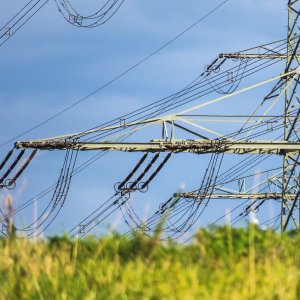
Monitoring, Warning System Decreases Hydro’s Flood Risks
 By Cas Biekmann | Journalist and Industry Analyst -
Tue, 04/06/2021 - 09:14
By Cas Biekmann | Journalist and Industry Analyst -
Tue, 04/06/2021 - 09:14
Representatives from state-owned utility CFE, grid operator CENACE and President López Obrador took part in the ‘Program to Support People Affected by Floods in Tabasco’ on Mar. 31. As part of the program, they presented a monitoring and warning system at the Grijalva River dam, considered a key element to CFE’s future power production plans focused on hydroelectricity.
As part of López Obrador’s electricity law initiative, the Mexican government aimed to favor CFE’s hydropower in regards to energy dispatch. Even though the initiative has currently been halted by federal judges for going against free competition provisions embedded in Mexico’s constitutional law, the PRODESEN 2020-2034 development plan shows clearly that the utility is planning to revamp and perhaps even expand its hydropower capacity. The 480km Grijalva River, flowing from Chiapas to Tabasco, is an important factor in Mexico’s hydroelectricity, with several hydroelectrical power plants using its water. In September 2020, BNAmericas reported that the dams along the river had produced 5.93TWh in the June to August period, 60 percent more than its average. Nearing 5GW, the river represents over 40 percent of Mexico’s installed hydroelectricity capacity.
An important factor in this ramped up production is the heavy rainfall the states of Chiapas and Tabasco generally experience during the summer months. Other than reducing the storage capacity present in the dams, floods present a clear risk to surrounding communities. Hydroelectricity provides clean, renewable energy, but climate change is worsening the effects of rainfall. To help minimize these risks, government actors collaborated to install a monitoring and warning system based on a short-term weather forecast. Carlos Morales, Operations Director and Grijalva River Dam Management Commissioner of CFE, announced that the utility would work together with CENACE to adjust the dam’s reservoirs in real time to prevent flooding. López Obrador added that by favoring hydroelectricity in the dispatch, flooding could be prevented as well.
The system will consist of 56 hydrometric stations operated by CFE and 394 operated by CONAGUA. Before the raining season begins, 371 of these stations will have already entered into operation. Morales added that the government is establishing an operational group to ensure that the surrounding population’s safety is valued over the power plants, which are usually favored in the dispatch for economic reasons. Furthermore, CFE is investing in other safety measures focusing on soil and hydrometric stations.
For potential new hydropower projects, the previous paradigm of multi-GW projects will likely no longer apply, lowering associated risks of flooding. “The social issue is the biggest factor when it comes to developing hydroelectricity. Modern projects are no longer those huge dams that would flood hundreds of kilometers and would have to relocate entire settlements. Now, we see small projects that flood 5 to 20ha, usually developed in areas where the population will not be displaced,” said Jacobo Mekler Weisburd, Partner at COMEXHIDRO, during an MBN interview.
















